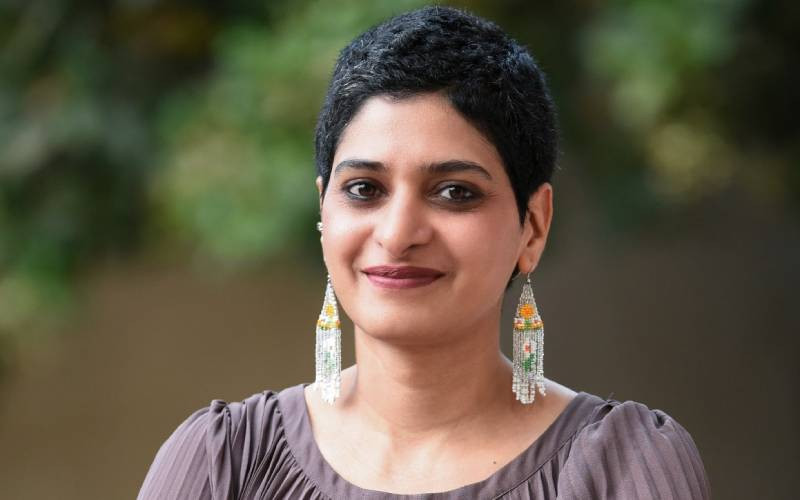By Odipo Osano
Kenyans agreed that women and men have the right to equal treatment, including the right to equal opportunities in political, economic, cultural and social spheres. (Article 27 (b) of the Constitution) requires the State should take legislative and other measures, including affirmative action, to entrench this (Article 27 (6)).
These provisions are fair for the progressive and civilised minds and, I earnestly appeal to all to disentangle themselves from past prejudices and biases, and constructively think of means to achieve this ideal.
The unanimously agreed goal post was two-thirds and herein is a suggestion on how to score without contravening the Constitution.
The supreme law restricts the membership of National Assembly to 350 out of which 290 should be elected competitively. The Constitution does not say that the persons who emerge with the largest number of votes after competitive voting must automatically win.
Even presidency will only be attained when a candidate wins at least 25 per cent of the votes cast in each of more than half of the 47 counties.
Elsewhere, the final and official outcome of US 2000 election was 50,456,002, 50,999,897 and 2,882,955 for George Bush, Albert Gore and Ralph Nader, and yet Bush was sworn-in as the President.
Consider these scenarios:
Scenario One: The worst-case scenario where only one gender presents itself for elective positions. Of course, if one does not get into the arena, then one will certainly not win a battle.
In all fairness, there are known factors that have impeded women from offering themselves for competition for elective positions. Some factors lend themselves to long-term interventions, while other should be resolved immediately in accordance with Article 27 (6).
Not taking any measure is unconstitutional and I do suggest legislative measures should be taken to ensure that the competing political parties and stakeholders present equitable number of each gender for the March 4 elections. The two-third-gender rule should start with party nominations.
Scenario Two: 290 women are elected to give 337 elected female members (remember the elected 47 female members at Article 97(1b)) and one elected female speaker.
At worst, a maximum of eight women so that to achieve a constitutionally acceptable threshold for the National Assembly, elections in 113 constituencies would need to be revisited to elevate men.
Scenario Three: If the 290 men are elected we will end up 47 elected women county representatives, and a possibility of eight nominated men, and a male speaker of the national assembly. Sixty-five constituencies will need to elevate women.
Scenerio Four: If Kenya repeats the trend of the 2007 elections where women achieve 7.6 per cent representation after competitive elections, 42 women will need to be elevated.
Stay informed. Subscribe to our newsletter
Revisiting elections to correct for deficit in the gender parity will involve elevation of the next best performing ‘lesser’ gender to Parliament at the expense of a ‘winner’. How do you chose the lesser gender (man or woman) and in what constituencies?
The following principles should be legislated: The next best performing individual need not be a runner-up; consideration should be made of the proportion of casted vote won, voter turnout in the constituency, the population of the constituency, county of the candidate, and political party compliance with two-third gender rule.
A formula that encourages both genders to compete, motivate high voter turnout, and spread out the proportion of the gender participation in leadership countrywide could be arrived at and agreed upon by the Parliament.
Possible untoward effect of this suggestion is disappointment of a few members who will have ‘won’ elections but would fail to ascend to power.
Let us benchmark with US. Another effect is that for the sake of compliance, the political parties could choose lesser gender for nominations in areas where they are less popular.
No political party is particularly favoured in this game and if this should lead to a certain political party getting MPs outside their strongholds, then what could be a better idea for Kenya’s cohesion.
Dr Osano is a Lecturer at Moi University
 The Standard Group Plc is a
multi-media organization with investments in media platforms spanning newspaper
print operations, television, radio broadcasting, digital and online services. The
Standard Group is recognized as a leading multi-media house in Kenya with a key
influence in matters of national and international interest.
The Standard Group Plc is a
multi-media organization with investments in media platforms spanning newspaper
print operations, television, radio broadcasting, digital and online services. The
Standard Group is recognized as a leading multi-media house in Kenya with a key
influence in matters of national and international interest.
 The Standard Group Plc is a
multi-media organization with investments in media platforms spanning newspaper
print operations, television, radio broadcasting, digital and online services. The
Standard Group is recognized as a leading multi-media house in Kenya with a key
influence in matters of national and international interest.
The Standard Group Plc is a
multi-media organization with investments in media platforms spanning newspaper
print operations, television, radio broadcasting, digital and online services. The
Standard Group is recognized as a leading multi-media house in Kenya with a key
influence in matters of national and international interest.








